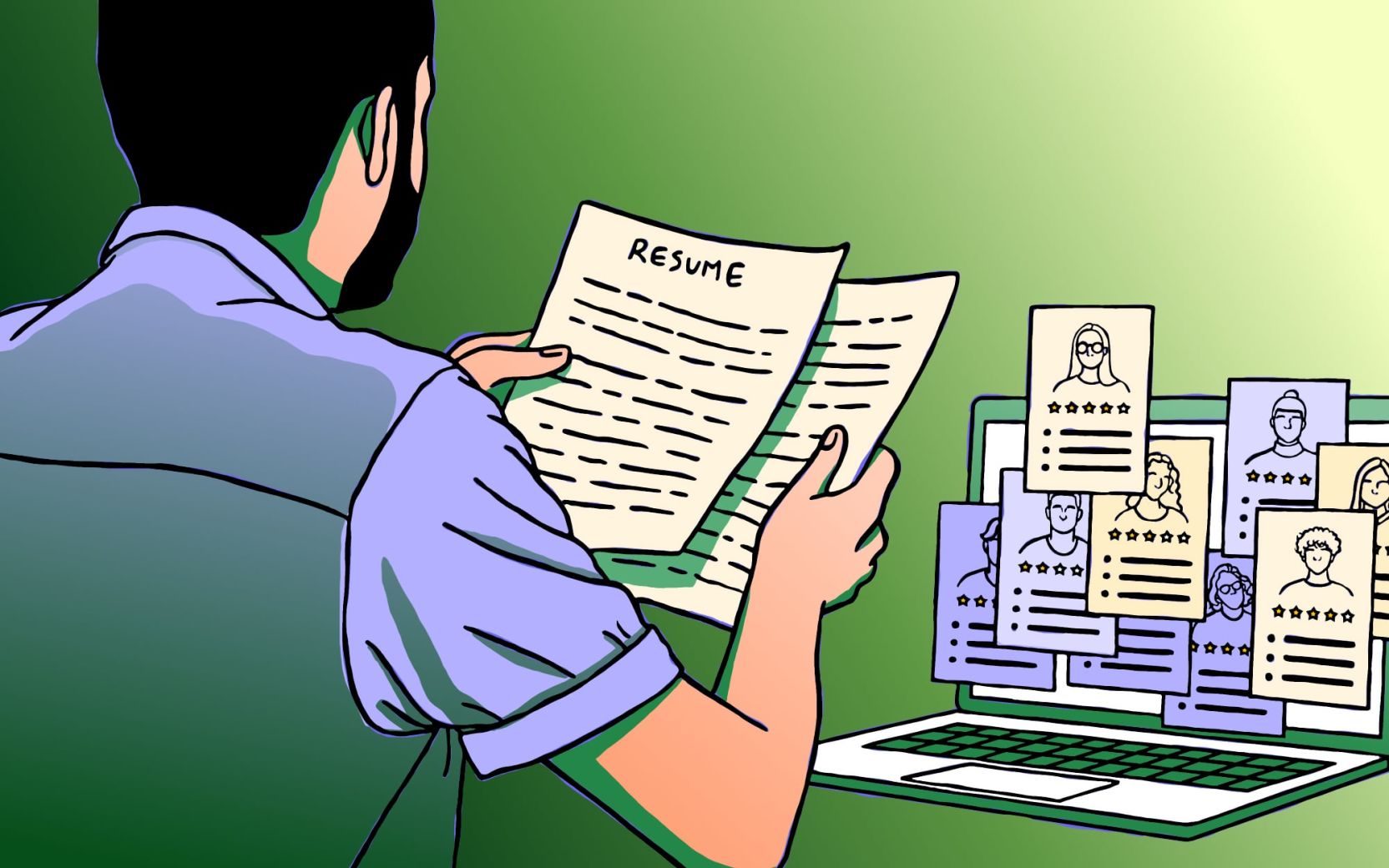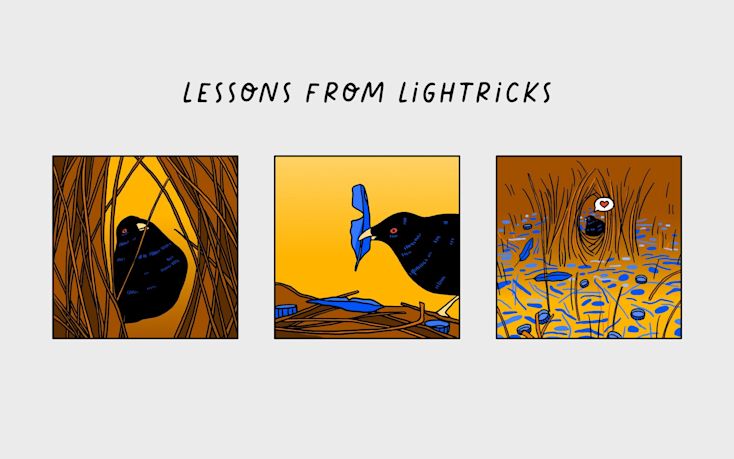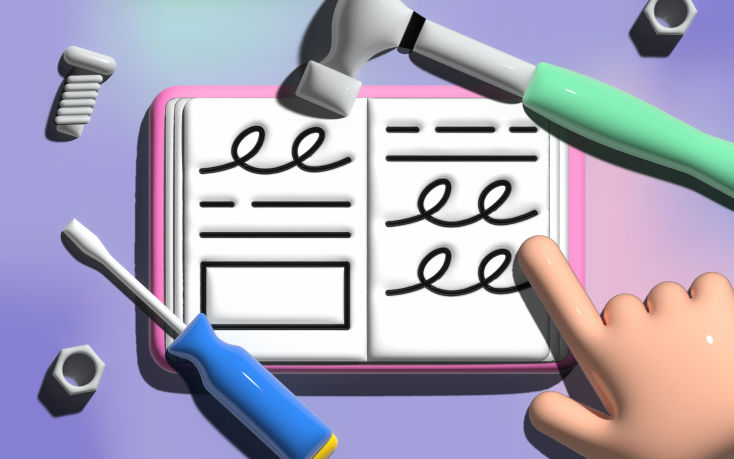How to prepare for a UXR interview as a hiring manager

Just because you are on the other side of the interview doesn’t necessarily mean the job interview process is less stressful—it is just a different type of stress! I remember the first time I started shadowing hiring managers in job interviews. Although I was well-versed in asking good questions, it was a whole other ball game. The interviewer carefully crafted and selected the best questions to help us assess the candidate.
Never had I had to assess someone through question-asking. I was okay with having open-ended conversations or evaluating a prototype, but not another human. What if I made the wrong choice? Asked the wrong questions? Hurt the candidate’s view of the company? My first solo job interview as a hiring manager was terrifying, and I think I was more nervous than the person I was interviewing.
Since then, I have sat in and conducted hundreds of job interviews (and been a candidate for just as many). Over time, I have collected ways to mitigate this stress for myself and the candidate, making it a better experience for us both.
Prep for the interview
Recruiting people is challenging—both users and potential employees! When you are looking for a new person to join your team, the to-do list can feel endless. Between reaching out, posting, fielding applications, scrolling through portfolios, and scheduling interviews, you can already feel burnt out by the time you get around to talking to candidates. So here are ways I prep ahead of time to streamline the process.
Write a great job description
Everything starts with the job description that people read. But, if your job description is too vague or the responsibilities are unclear, you might get applications that don’t make sense. So, how do you write a job description that brings you the right candidates?
When beginning to write job descriptions, I first did desk research. I went through many job descriptions from other companies and picked out what stood out as most impactful and what I didn’t like. Then, I piled examples into these two categories until I felt like I saw the same themes repeatedly (hey, user research!). After that, I started to craft my job description.
Here is an example of what I include in job descriptions:
Conduct both generative and evaluative research using various methods to collect and analyze users’ behavior, such as usability testing, surveys, interviews, diary studies, and card sorting
Collect information from different teams (e.g., product, account management, customer success, sales, marketing, tech) to understand assumptions about users and current gaps in knowledge
Proactively work with teams (e.g., product, account management, customer success, sales, marketing, tech) to share insights and deliverables through collaborative synthesis, presentations, and workshops
Assist teams in turning research into real, actionable ideas through ideation workshops, helping them to develop user-centric prototypes, wireframes, and experiences
Prioritize the most impactful research to teams, the business, and our users by balancing research requests
Turn business questions and goals into viable research studies that deliver value to the company
Identify new, innovative product or feature areas for the company through research
Execute the end-to-end research process, including planning, scoping, recruiting, conducting, analyzing, and sharing
The opportunity to help scale the research team and set up a foundation for the company to grow
Of course, different levels require different job posts, so keep that in mind when writing requirements. These bullet points are meant to entice people to join the company. Through this job description, you want people to understand what you need from them and be excited by your opportunities. Try to avoid generic bullet points that don’t explain your expectations. Get creative!
Decide on the structure for the process
One of the worst experiences for a candidate is a confusing or ambiguous interview process. Not predetermining the different steps you want the candidate to go through is more work for you. By deciding on a structure early on, you are setting yourself and the candidate up for success. You can let them know what they should expect from each interview stage and reduce miscommunication.
Most companies have similar interview processes, so no need to reinvent the wheel. Here are is a sample interview process I have set up at a previous company:
Screening call with HR or the recruiter where you get to know the candidate and ask general skill-based questions—30 minutes
Deep dive interview with another researcher/designer/product manager (depending on your team set-up) where the candidate presents one or two case studies to better assess their skills��—60 minutes
Panel interview with several team members or close working colleagues where the candidate presents (usually the same) case study to a group of people they would be working with. In this interview, you are further assessing their skills and understanding their collaboration skills —60 to 90 minutes
A whiteboard challenge or a homework assignment is a way to understand how a candidate approaches a problem by giving them an assignment.
The Whiteboard Challenge is usually live, where the person has a few minutes to think about the problem you gave them and is then working through their approach with you—45 to 60 minutes
A homework assignment is where you send the assignment to the candidate, and then they create a presentation they share in another interview (or during the panel interview)—five working days
Interview with their manager where you ask them more questions about their skills and assess knowledge level, as well as culture fit—60 minutes
Final HR or recruitment call that is all about an offer (or rejection), talking about contracts, salaries, and start dates—30 minutes
Of course, you can shorten (or even lengthen) this process to whatever fits your organization.
Build a challenge or homework assignment
To challenge or not to challenge? That is the question! Many companies took the UX design whiteboard challenge to apply it to the user research job process. There are two main ways to incorporate this step into your interview process:
Whiteboard challenge. The whiteboard challenge is when you invite the candidate in for an interview and give them a problem to solve with you
Homework assignment. The homework assignment is when you send a problem to the candidate to solve on time and later present it to you
I am a big fan of these challenges, not because they are scary and complex, but because they can genuinely reveal how a researcher would approach a problem at your organization. I prefer the whiteboard challenge because I love to have these discussions live with research candidates.
Coming up with these challenges can be…well, challenging. I always try to make them relevant to our organization or industry rather than picking a random problem and context. When coming up with a problem, think about similar issues you or other researchers in the organization have faced. Sometimes, it is fun to use a problem you tackled in the past to see how others would approach it.
Here are some examples of whiteboard challenges and homework assignments I have used in the past:
We just noticed that many users signed up on our app and then quickly left. How would you determine why they left and how to get them back?
We have just launched a new subscription offer that allows people to make orders and returns more quickly and get alerted to sales early. The team wants to know what new features they should create to get new customers. How would you design this study?
Your team has approached you with a list of research questions they need to answer in about five weeks. The questions include:
How do users navigate through our app?
Do our filters provide value for our users? Or what would they prefer?
How do users perceive our homepage? Is it helpful to them?
Why do users download our app?
Consider a scorecard
For a while, I didn’t standardize what I was looking for in a candidate or the assessment process. Instead, I took each candidate and assessed them independently, having the general criteria in my mind. Although this was an okay way of approaching assessment, I was more likely to make mistakes or forget to look at particular criteria. Not having a standard approach made it more difficult to ensure I asked the questions I needed to assess the candidates equally.
After some time, I created a job scorecard that was the same for each candidate. Check out this scorecard template you can use in your own interviews.

Give candidates a chance to ask questions
Regardless of the amount of time, it is always important to reserve time for the candidate to ask you questions during an interview. There are a few reasons this is necessary:
It allows them to properly assess you and make a more informed decision on if they want to move forward in the process and if your company is a good fit for them
You can use these questions to understand how the candidate is thinking—for example, if candidates ask about org structure or where research requests come from, I get a better sense that they will think about this in their role. Alternatively, if a candidate doesn’t ask questions, it sends up a bit of a red flag
Giving candidates the chance to ask questions make the experience better for them. One of my biggest pet peeves is when I have an interview with a company, and I don’t have the opportunity to ask any questions. It can make me feel like they don’t care about my side of the experience
If hiring is more fun for you, it will be more fun for the candidate. The clearer you can be with what you need and expect from candidates, the more smoothly the process will go.
Written by Nikki Anderson, User Research Lead & Instructor. Nikki is a User Research Lead and Instructor with over eight years of experience. She has worked in all different sizes of companies, ranging from a tiny start-up called ALICE to large corporation Zalando, and also as a freelancer. During this time, she has led a diverse range of end-to-end research projects across the world, specializing in generative user research. Nikki also owns her own company, User Research Academy, a community and education platform designed to help people get into the field of user research, or learn more about how user research impacts their current role. User Research Academy hosts online classes, content, as well as personalized mentorship opportunities with Nikki. She is extremely passionate about teaching and supporting others throughout their journey in user research. To spread the word of research and help others transition and grow in the field, she writes as a writer at dscout and Dovetail. Outside of the world of user research, you can find Nikki (happily) surrounded by animals, including her dog and two cats, reading on her Kindle, playing old-school video games like Pokemon and World of Warcraft, and writing fiction novels.

Users report unexpectedly high data usage, especially during streaming sessions.
09:46AM24 Sep, 2024
Users find it hard to navigate from the home page to relevant playlists in the app.
11:32AM9 Mar, 2024
It would be great to have a sleep timer feature, especially for bedtime listening.
15:03PM13 May, 2024
I need better filters to find the songs or artists I’m looking for.
4:46PM15 Feb, 2024Log in or sign up
Get started for free
or
By clicking “Continue with Google / Email” you agree to our User Terms of Service and Privacy Policy



